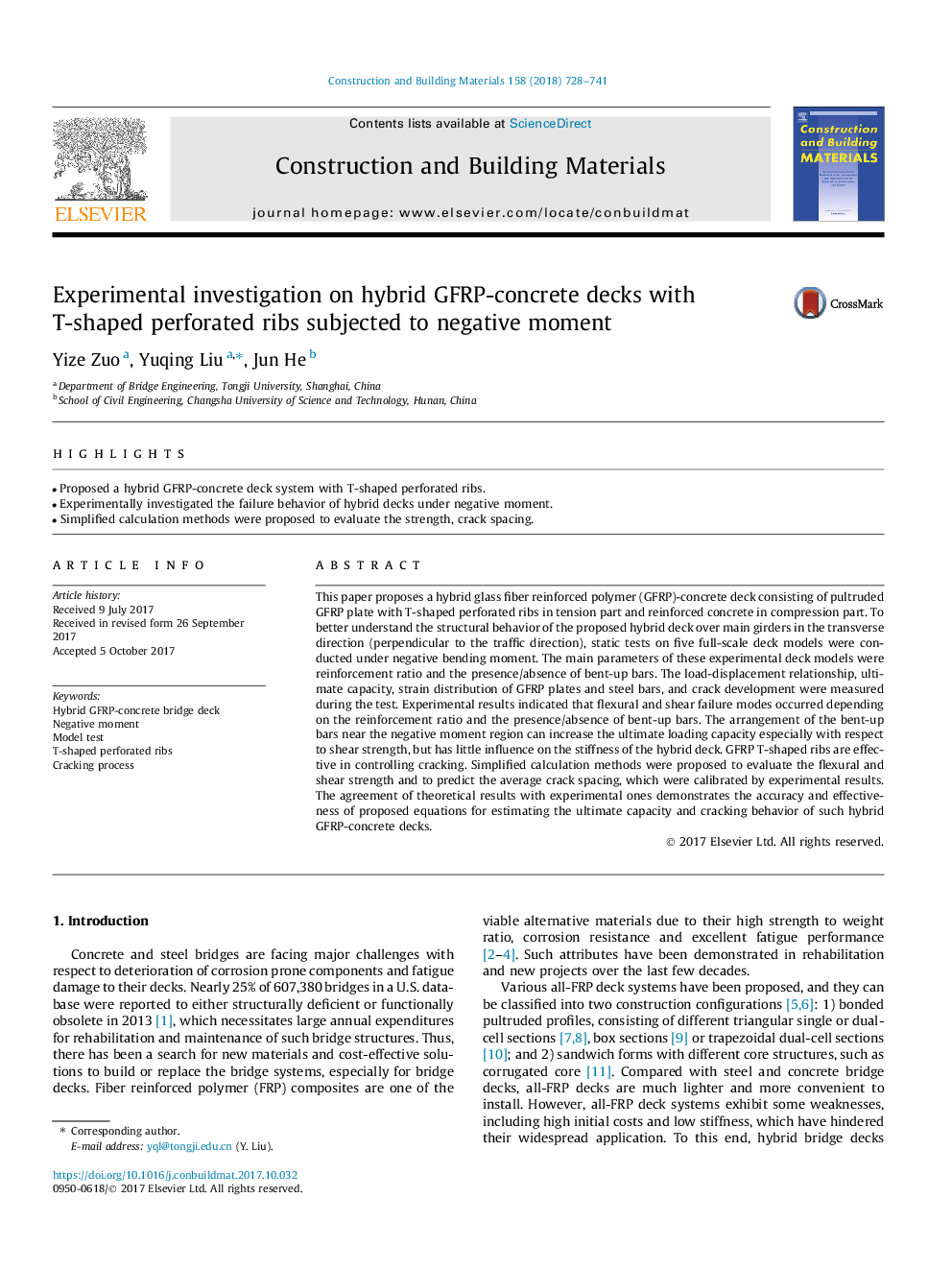| Article ID | Journal | Published Year | Pages | File Type |
|---|---|---|---|---|
| 6717612 | Construction and Building Materials | 2018 | 14 Pages |
Abstract
This paper proposes a hybrid glass fiber reinforced polymer (GFRP)-concrete deck consisting of pultruded GFRP plate with T-shaped perforated ribs in tension part and reinforced concrete in compression part. To better understand the structural behavior of the proposed hybrid deck over main girders in the transverse direction (perpendicular to the traffic direction), static tests on five full-scale deck models were conducted under negative bending moment. The main parameters of these experimental deck models were reinforcement ratio and the presence/absence of bent-up bars. The load-displacement relationship, ultimate capacity, strain distribution of GFRP plates and steel bars, and crack development were measured during the test. Experimental results indicated that flexural and shear failure modes occurred depending on the reinforcement ratio and the presence/absence of bent-up bars. The arrangement of the bent-up bars near the negative moment region can increase the ultimate loading capacity especially with respect to shear strength, but has little influence on the stiffness of the hybrid deck. GFRP T-shaped ribs are effective in controlling cracking. Simplified calculation methods were proposed to evaluate the flexural and shear strength and to predict the average crack spacing, which were calibrated by experimental results. The agreement of theoretical results with experimental ones demonstrates the accuracy and effectiveness of proposed equations for estimating the ultimate capacity and cracking behavior of such hybrid GFRP-concrete decks.
Related Topics
Physical Sciences and Engineering
Engineering
Civil and Structural Engineering
Authors
Yize Zuo, Yuqing Liu, Jun He,
